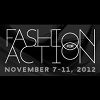 Over the past decade, there has been a swell of criticism about the (politically) correct way to fundraise for AIDS. The early 2000s saw the creation of the Product RED campaign, where mega-corporations including Apple, Gap Inc. and Nike sold so-called specialty items—ubiquitously red iPods, T-shirts, sneakers and so-forth—to raise funds to fight HIV/AIDS in Africa, highlighting an oft-repeated yet highly contentious relationship between consumerism and AIDS activism.
Over the past decade, there has been a swell of criticism about the (politically) correct way to fundraise for AIDS. The early 2000s saw the creation of the Product RED campaign, where mega-corporations including Apple, Gap Inc. and Nike sold so-called specialty items—ubiquitously red iPods, T-shirts, sneakers and so-forth—to raise funds to fight HIV/AIDS in Africa, highlighting an oft-repeated yet highly contentious relationship between consumerism and AIDS activism.
Yet while the campaign’s visibility was unmistakable, its actual effect on people living with HIV/AIDS remains ambiguous. A number of reports revealed that companies donated paltry amounts of their RED product profits to the campaign (Apple donated $10 from each $200 red iPod sold to the campaign, for example).
Yet with the ever-rising cost of treatment in the United States, and with the government’s looming sequestration cuts posed to slash an astounding $538 million in domestic HIV/AIDS programs, we must continue to find ways to fund the fight against—and to end—the AIDS pandemic. This includes reaching out to consumer activists through innovative public/private partnerships.
Indeed, when domestic discretionary spending for social services and health care for the vulnerable are the first to go in city, state and national budgets, these public and private partnerships may offer a pivotal push in the fight against AIDS. If the sequestration cuts do occur—which would include cuts to Ryan White and the AIDS Drug Assistance Program—they will have a devastating trickle-down effect on state funding for local HIV/AIDS services. In other words, local and state AIDS service organizations and programs will feel the brunt of these federal cuts.
Given the reduced funding for HIV/AIDS across the country, it comes as no surprise that funding, and more of it, is often the rallying cry for many AIDS organizations and activists (case in point: this summer’s We Can End AIDS march in DC). Despite these requests for more money, finding—and receiving—the funds to treat the pandemic and continue prevention efforts is often like scraping the bottom of the proverbial barrel. There simply isn’t enough. Fortunately, however, AIDS activists and the LGBT communities are rooted in a strong history of building and sustaining creative ways to fund the fight against the disease.
Take, for example, Housing Works’ Fashion for Action fall fundraiser, which raised nearly $400,000 last year to support New York City’s homeless and those living with and affected by HIV/AIDS. The event funds the organization’s direct services to these communities and continues to provide them with the innovative services and steadfast support to live proud, self-sustaining lives.
Using donated, current fashion pieces from industry leaders such as Thom Browne, Marc Jacobs and Diane von Furstenberg, among others, Housing Works sells the clothing at a charitable discount and uses the proceeds to fund health care and housing for those living with the disease, including integrated health care, dental services, mental health services, addiction counseling, and housing in Brooklyn, Harlem and Manhattan. By using donated goods, Fashion for Action avoids the manufacturing of specialty items for the cause, making it a greener way to support HIV/AIDS care and prevention.
This year, Housing Works hopes to raise even more money to help the homeless and those living with HIV/AIDS through Fashion for Action. With the expansion of Housing Works’ competent harm reduction and transgender services, and the organization’s outreach after the devastating effects of Hurricane Sandy, the fundraiser comes at a moment of great importance for the city. With an unprecedented 50,000 homeless New Yorkers, 20,000 of which are children, we cannot afford to stand by while this population grows more vulnerable with each passing night.
With the seemingly ever-impending cuts to services and programs that aid the country’s disenfranchised, we simply cannot afford to overlook the power of public and private partnerships. As activists, neighbors, families, friends and, yes, as consumers, we will continue to support organizations and work that advocate for the dignity and equal care of those living with HIV/AIDS, even when city and state wallets cannot match their good intentions.
When you buy a ticket to Fashion for Action, which takes place this year Wednesday, November 7, you will understand firsthand the ways that Housing Works helps people living with HIV/AIDS, leaving no doubt as to the magnitude and veracity of the changes that the organization seeks to engender. From clients who have found full-time work after graduating from the organization’s Job Training Program, to the families and individuals who have found permanent, stable housing through the assistance of social service support, you will see true philanthropy in action. And what’s more fashionable than that?
Charitable Giving Is Never Out of Fashion
Commentary by the communications manager of Housing Works, a nonprofit that seeks to end the dual crises of homelessness and AIDS.






Comments
Comments